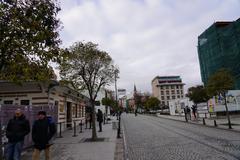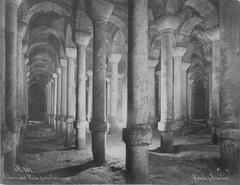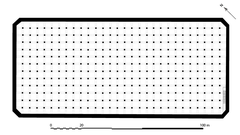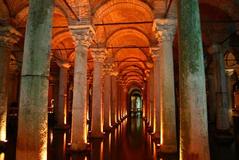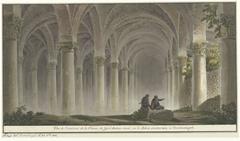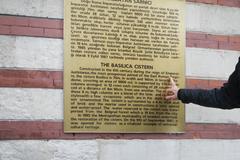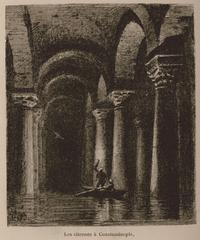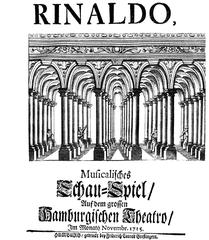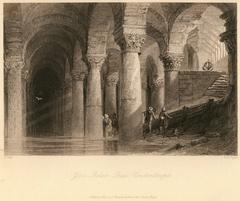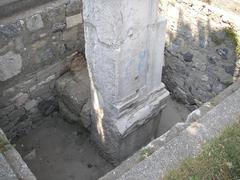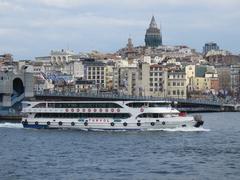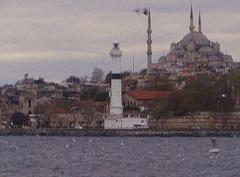
Comprehensive Guide to Visiting Yerebatan Sarnıcı, Istanbul, Türkiye
Date: 16/07/2024
Introduction
The Basilica Cistern, locally known as Yerebatan Sarnıcı, stands as one of Istanbul’s most intriguing historical treasures. Constructed in 532 AD during the reign of Byzantine Emperor Justinian I, this underground marvel showcases the architectural brilliance and resourcefulness of the Byzantine Empire. Spanning approximately 9,800 square meters and supported by 336 marble columns, the cistern was initially built to provide a water filtration system for the Great Palace of Constantinople and other structures on the First Hill (Istanbul Clues). The cistern’s historical significance extends through the Byzantine era, serving as a critical water source for the city, and even into the Ottoman period, where it saw a decline in use but was later rediscovered and restored for modern-day visitors. Today, the Basilica Cistern is not only a testament to ancient engineering but also a popular tourist attraction, captivating visitors with its mysterious ambiance and cultural significance (Turkey Travel Planner).
Table of Contents
- Introduction
- History of the Basilica Cistern
- Architectural Features
- Visitor Information
- Cultural Significance and Modern-Day Attraction
- Guided Tours and Special Events
- Conclusion
- FAQ
History of the Basilica Cistern
Construction and Early Use
The Basilica Cistern was constructed to provide a water filtration system for the Great Palace of Constantinople and other buildings on the First Hill. This massive project involved thousands of slaves and measures approximately 138 meters by 64.6 meters, covering nearly 9,800 square meters. The cistern can hold up to 80,000 cubic meters of water and is supported by 336 marble columns, each standing 9 meters high. These columns were likely recycled from older Roman buildings, showcasing the resourcefulness of Byzantine engineers (Istanbul Clues).
Byzantine Era
During the Byzantine era, the Basilica Cistern played a crucial role in the city’s water supply system. Water was transported from the Belgrade Forest, located 19 kilometers north of the city, via aqueducts built by Emperor Valens and other subsequent rulers. The cistern ensured a steady supply of water to the Great Palace, especially during sieges when the city’s external water sources could be cut off (Turkey Travel Planner).
Ottoman Period
With the conquest of Constantinople by the Ottoman Empire in 1453, the significance of the Basilica Cistern diminished. The Ottomans preferred running water over stored water and developed their own supply systems. The cistern continued to be used for a time to water the gardens of Topkapi Palace but fell into disrepair over the centuries. It was largely forgotten until its rediscovery in the 16th century by Dutch traveler P. Gyllius, who was researching Byzantine antiquities in Istanbul (Istanbul Guide).
Rediscovery and Restoration
P. Gyllius’s rediscovery of the Basilica Cistern in 1545 brought the ancient structure back into the public eye. He described how locals accessed the cistern by lowering buckets through holes in their basements to draw water and catch fish. His accounts sparked renewed interest, leading to several restoration efforts. Significant restoration work was carried out in the 18th century by Ottoman architect Mimar Sinan, who repaired the aqueducts supplying water to the cistern. Further restorations in the 19th and 20th centuries, particularly in the 1980s, cleaned and opened the cistern to the public as a tourist attraction (Istanbul Tourist Information).
Architectural Features
The architectural features of the Basilica Cistern are a testament to Byzantine engineering prowess. The cistern’s ceiling is supported by a forest of columns, many adorned with intricate carvings and designs. Notably, two columns feature the heads of Medusa, one placed sideways and the other upside down. The origin and purpose of these Medusa heads remain a mystery, but they are believed to have been repurposed from earlier Roman structures (Istanbul Insider). The columns themselves are a mix of styles, with some featuring Corinthian capitals and others displaying Doric designs, reflecting the Byzantine practice of reusing materials from earlier structures.
Visitor Information
Basilica Cistern Tickets and Visiting Hours
The Basilica Cistern is open to visitors every day of the week. Visiting hours are typically from 9:00 AM to 5:30 PM, but it’s always best to check the official website or local tourist information for any changes. Tickets can be purchased at the entrance or online to avoid long queues. Ticket prices vary, with discounts available for students, seniors, and children.
Travel Tips
- Getting There: The Basilica Cistern is located in the Sultanahmet district, near other popular attractions like the Hagia Sophia and the Blue Mosque. It’s easily accessible by public transportation, including trams and buses.
- Best Time to Visit: To avoid crowds, consider visiting early in the morning or later in the afternoon. Weekdays are generally less crowded than weekends.
- Accessibility: The Basilica Cistern is partially accessible to visitors with mobility issues. However, the dim lighting and uneven pathways may pose challenges, so it’s advisable to plan accordingly.
- Photography: The dim lighting creates a mystical atmosphere perfect for photography. However, be prepared to adjust your camera settings for low light.
- Nearby Attractions: After visiting the Basilica Cistern, explore nearby attractions like the Hagia Sophia, Blue Mosque, and Topkapi Palace, all within walking distance.
Cultural Significance and Modern-Day Attraction
The Basilica Cistern holds immense cultural significance as a marvel of ancient engineering and a symbol of Istanbul’s rich history. It has been featured in various works of literature, film, and popular culture, such as Dan Brown’s novel “Inferno” and the James Bond film “From Russia with Love.” The cistern continues to captivate visitors with its mysterious and serene environment.
Guided Tours and Special Events
Guided tours are available for visitors who want a deeper understanding of the Basilica Cistern’s history and significance. Some tours include visits to other historical sites in the Sultanahmet district. Special events, such as classical music concerts, are occasionally held in the cistern, adding to its allure as a cultural venue.
Conclusion
The Basilica Cistern is a must-visit destination for anyone interested in Istanbul’s rich history and architectural marvels. From its impressive construction and historical significance to its modern-day allure, the cistern offers a unique and unforgettable experience. Plan your visit, explore nearby attractions, and immerse yourself in the fascinating history of this ancient site.
FAQ
Q: What are the visiting hours for the Basilica Cistern?
- A: The Basilica Cistern is typically open from 9:00 AM to 5:30 PM daily. Check the official website for any changes.
Q: How much do tickets cost for the Basilica Cistern?
- A: Ticket prices vary, with discounts available for students, seniors, and children. Tickets can be purchased at the entrance or online.
Q: Is the Basilica Cistern accessible to visitors with mobility issues?
- A: The Basilica Cistern is partially accessible, but the dim lighting and uneven pathways may pose challenges.
Q: Are guided tours available at the Basilica Cistern?
- A: Yes, guided tours are available and can provide a deeper understanding of the site’s history and significance.
Visit the Basilica Cistern and experience one of Istanbul’s most remarkable historical sites. For more travel tips and updates, follow us on social media or download our mobile app.
